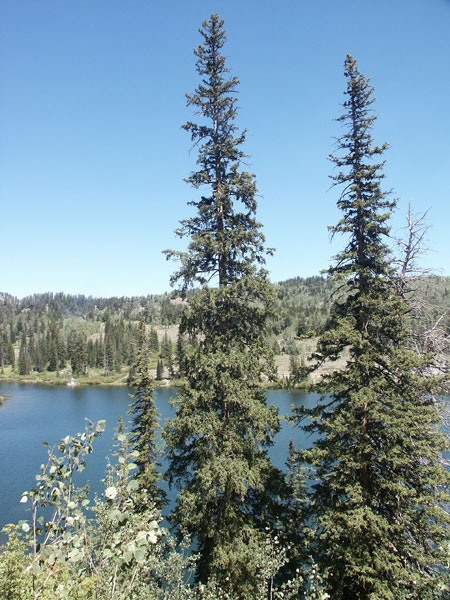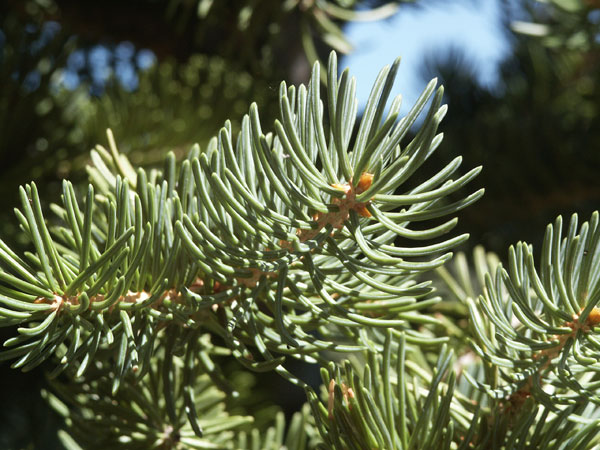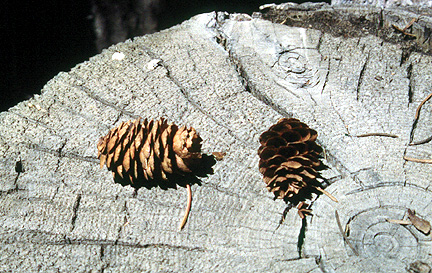Engelmann Spruce
Picea engelmannii
Family: Pinaceae or Pine
Leaves: Needles borne singly; about 1" long; evergreen; blue-green to dark green; 4-angled; not as sharp pointed as blue spruce; tend to be crowded on around upper side of twig; fragrant when crushed.
Twigs/buds: Leaves attached with a short stalk that remains part of the twig, so twig rough; young twigs with minute hairs. Buds with scales that lie fairly flat.
Flowers/fruit: Fruit a papery cone that hangs down; about 1" to 2-1/2" long; light chestnut-brown; papery scales are slightly round-toothed at tip.
Bark: Red to purple-brown; made-up of thin scales; thinner than blue spruce.
Wood: Moderate importance; heartwood not distinct; nearly white to light brown; growth rings distinct; used for lumber, poles, ties, and fuel.
General: Native throughout the Rocky Mountains and parts of the Pacific Northwest and western Canada. Slow growing. Likes cool, moist sites and good soil. Wind-throw (trees being blown over) is a problem if the site is disturbed. Shade tolerant.
Landscape Use: Rarely used, though some mountain homes are built in Engelmann spruce stands. Probably would not do well at lower, warmer, drier locations. Blue spruce is more available and has good cultivars. Zones 2-5.





